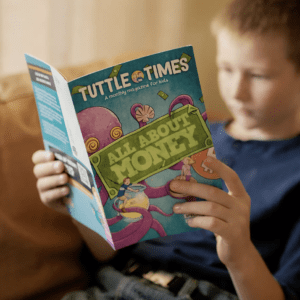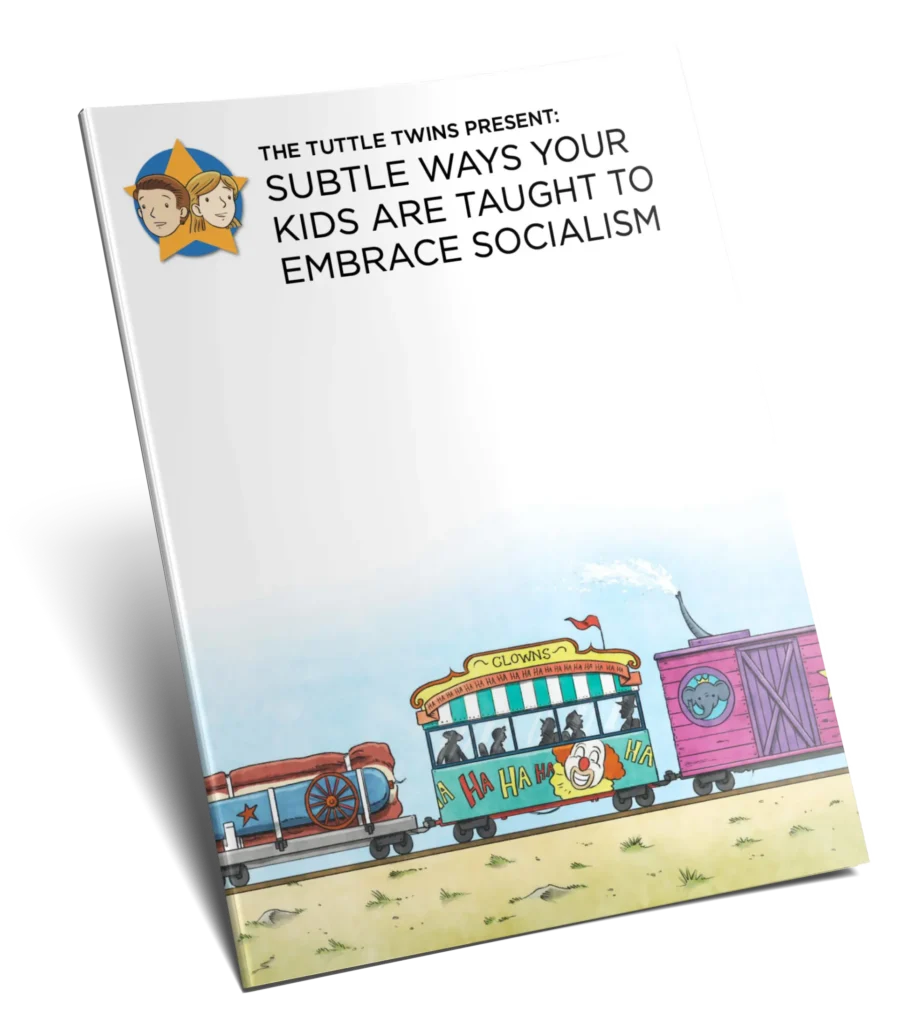SumthinWhittee
Hopefully Santa gives these out this year. Best gift to help counter the elementary school propaganda. #tuttletwins

How do we keep our kids from falling victim to the media trap?
As parents, it’s our responsibility to not only provide for our kids but also to guide them in becoming informed and responsible adults. One important aspect of this is helping them navigate the world of news and information.
In this digital age, access to news is easier than ever before. However, with so much information available at our fingertips, it’s crucial that we teach our kids how to critically evaluate what they’re reading, watching, and listening to.
As parents, it’s important that we help our kids understand the difference between real news and sensationalized content. For example, we can show them examples of misleading headlines and explain how they can be misleading. We can also teach them how to evaluate the credibility of sources by looking at the author’s credentials or the website’s reputation.
A great way to help kids understand the difference between real news and sensationalized content is to expose them to a variety of news sources. This will help them understand that there is often more than one perspective on a given story, and that different sources may have different agendas. Encourage them to compare and contrast different articles on the same topic, and to consider the evidence presented in each. This will help them develop the ability to discern fact from fiction, and to evaluate the credibility of different sources. Additionally, it’s important to talk to them about the role of media in shaping public opinion, and how certain stories may be used to manipulate or deceive people.
It’s also important to remember that these habits of critical thinking and discernment don’t magically go away when our kids grow up. The media landscape will continue to evolve, and it’s our job to equip our kids with the skills they need to navigate it successfully.

For example, we can encourage them to ask questions and think critically about the information they come across. We can also show them how to spot bias in news articles or how to identify fake news. By teaching them these skills, they will be better equipped to navigate the complex world of news and information as they grow up.
By teaching our kids to be critical consumers of media and setting a good example ourselves, we can help them become informed and responsible citizens who are able to navigate the complex world of news and information. It’s important to note that we must also be mindful of our own consumption, by being critical of the information we consume and the sources it comes from. This will also help us to be more discerning and make better decisions in our own lives.
For example, we can lead by example by showing them how we evaluate the credibility of sources, fact-check information and look for multiple perspectives ourselves. By doing this, we can set a good example for our kids and help them become more informed and responsible citizens.
Another important step in keeping our kids from falling victim to the media trap is limiting their exposure to sensationalized content. This can be done by monitoring the TV shows and websites they access, as well as the social media accounts they follow.
For example, we can restrict access to certain websites that are known to spread fake news or sensationalized stories. We can also teach them about the importance of privacy settings on social media and how to use them to filter out unwanted content.
 Encouraging Media Literacy and Digital Citizenship
Encouraging Media Literacy and Digital CitizenshipAnother important aspect of helping our kids navigate the world of news and information is encouraging media literacy and digital citizenship. This means teaching them how to use digital tools and platforms responsibly, as well as how to identify and avoid online scams, cyberbullying, and other forms of online harm.
It doesn’t hurt to encourage them to participate in media literacy programs and digital literacy workshops, which can provide them with the skills and knowledge they need to navigate the digital world safely and responsibly.
You want to raise kids who aren’t easily led astray or manipulated by the 24 hour news cycle, or social and political trends, and we’re here to help. Our books, curriculum, and monthly magazine offer important lessons that parents can use to teach their kids to be critical thinkers who exercise discernment in the face of never-ending media manipulation.
Check them out today!

There are many subtle ways that socialist ideas are being introduced, taught, and reinforced directly to your children.
Our e-book walks through several examples to help raise your attention to this agenda so you can help your children avoid being indoctrinated to support the state.
Hopefully Santa gives these out this year. Best gift to help counter the elementary school propaganda. #tuttletwins
When ur bedtime story teaches ur girl about the federal reserve & what a crock of crap it is. Vocab words: Medium of exchange & fiat currency. #tuttletwins for the win
“My just-turned-5 year old told me he is planning to read all the #TuttleTwins books today. It’s 10AM on Saturday and he’s already on his third. #Homeschooling ftw.”